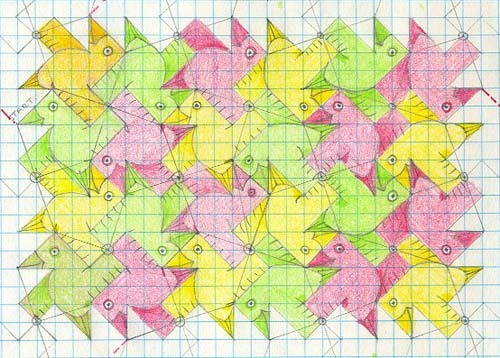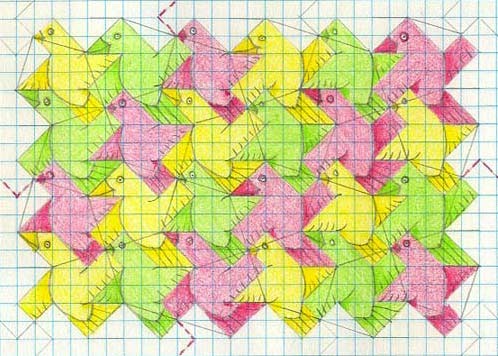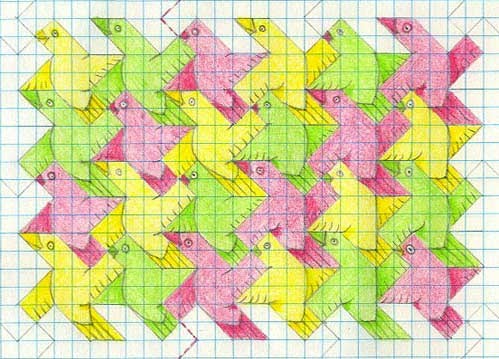Birds 7 consist of birds of a similar theme, these having all arisen out of one of my design methods. In contrast to the other bird sections, the method is discussed below (albeit briefly), from which from apparent simplicity this thus demonstrates how more complex combinations of motifs can thus ensue. These are then followed by some arbitrary examples, of a semi-neat nature that are a direct outcome of the process.
Firstly, a random repeating motif is used, placed systematically, thus forming a grid (a). From this, at the ends of the longer line, a 'square hole' can be seen.
|
| |
| |
|
Consequently, another (random) motif is used to close this space, in this instance a 'Z' line, which thus can entirely fill the 'hole', from which a tessellation would thus be formed if so completed. However, as the 'Z' line can be placed in four distinct ways, this thus naturally leads to experiments to determine 'all possibilities'. (The second row being colour coded for purposes of illustrating some possibilities as shown by (c) below.) This thus opens up more possibilities concerning the composition.
For instance, instead of a solitary 'Z' in the same orientation, experiments can be tried out with two, three or four of the 'Z's, of which (c), arbitrarily chosen amply demonstrates. Indeed, the determination of 'all possibilities' leads to an lengthy analysis, of many pages, only one of which is show here.
|
| | No.1 | One bird, belly and back views. This example is essentially shown as a finished work in Birds1 No.9, the birds there being of the belly view only.
|
| |
|
| |
|
| No.2 |
|
Two distinct birds, belly and back view.
|
| |
|
| |
|
|
No.3
|
|
One bird, belly and back view. This example is essentially shown as a finished work in Birds1 No.3, the birds there being of the belly view only.
|
| |
|
| |
|
|
|
No.4
|
| Two distinct birds, belly and back view. |
| |
|
| |
|
| No.5 |
|
Three distinct birds, belly and back view.
|
| |
|
| |
|
|
|
No.6
|
|
Two distinct birds, belly and back view.
|
|
|
|





